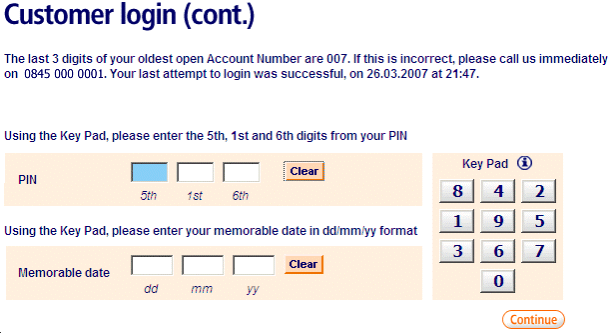Back in October, I started to look at the next version of Microsoft’s server operating system – Windows Server 2008. In that post I concentrated on two of the new technologies – Server Core and Windows Server Virtualization (since renamed as Hyper-V).
For those who have installed previous versions of Windows Server, Windows Server 2008 setup will be totally new. Windows Vista users will be familiar with some of the concepts, but Windows Server takes things a step further with simplified configuration and role-based administration.
Using a technology known as Windows PE, the new setup model allows multiple builds to be stored in a single image (using the .WIM file format). Because many of these builds will share the same files, single instance storage is used to reduce the volume of disk space required, allowing six operating system versions to fit into one DVD image (with plenty of free space).
The first stage of the setup process is about collecting information. Windows Setup now asks fewer questions and instead of being spread throughout the process (anybody ever left a server installation running and then returned to find it had stopped half way through for input of some networking details?) the information is all gathered at this first stage in the process. After gathering details for the language, time and currency, keyboard, product key (which can be left and entered later), version of Windows to install, license agreement and selection of a disk on which to install the operating system (including options for disk management), Windows Setup is ready to begin the installation. Incidentally, it’s probably worth noting that SATA disk controllers have been problematic when setting up previous versions of Windows. Windows Server 2008 had no issues with the motherboard SATA controller on the Dell server that I used for my research.
After collecting information, Windows Setup moves on to the actual installation. This consists of copying files, expanding files (which took about 10 minutes on my system), installing features, installing updates, two reboots and completing installation. One final reboot brings the system up to the login screen after which Windows is installed. On my server (with a fast processor, but only 512MB of RAM) the whole process took around 20 minutes.
At this point you may be wondering where the computer name, domain name, etc. is entered. Windows Setup initially installs the server into a workgroup (called WORKGROUP) and uses an automatically generated computer name. The Administrator password must be changed at first logon, after which the desktop is prepared and loaded.
Windows Server 2003 included an HTML application called the Configure Your Server Wizard and service pack 1 added the post-setup security updates (PSSU) functionality to allow the application of updates before enabling non-essential services. In Windows Server 2008 this is enhanced with a feature called the Initial Tasks Configuration Wizard. This takes an administrator through the final steps in setup (or initial tasks in configuration):
- Provide computer information – configure networking, change the computer name and join a domain.
- Update this server – enable Automatic Updates and Windows Error Reporting, download the latest updates.
- Customise this server – add roles or features, enable Remote Desktop, configure Windows Firewall (now enabled by default).
Roles and Features are an important change in Windows Server 2008. The enhanced role-based administration model provides a simple approach for an administrator to install Windows components and configure the firewall to allow access in a secure manner. At release candidate 1 (RC1), Windows Server 2008 includes 17 roles (e.g. Active Directory Domain Services, DHCP Server, DNS Server, Web Server, etc.) and 35 features (e.g. failover clustering, .NET Framework 3.0, Telnet Server, Windows PowerShell).
Finally, all of the initial configuration tasks can be saved as HTML for printing, storage, or e-mailing (e.g. to a configuration management system).
Although Windows Server 2008 includes many familiar Microsoft Management Console snap-ins, it includes a new console which is intended to act as a central point of administration – Server Manager. Broken out into Roles, Features, Diagnostics (Event Viewer, Reliability and Performance, and Device Manager), Configuration (Task Scheduler, Windows Firewall with Advanced Security, Services, WMI Control and Local Users and Groups)and Storage (Windows Server Backup and Disk Management), Server Manager provides most of the information that an administrator needs – all in one place.
It’s worth noting that the Initial Tasks Configuration Wizard and Server Manager do not apply for Server Core installations. Server Manager can be used to remotely administer a computer running Server Core, or hardcore administrators can configure the server from the command line.
So that’s Windows Server 2008 setup and configuration in a nutshell. Greatly simplified. More secure. Much faster.
Of course, there are options for customising Windows images and pre-defining setup options but these are beyond the scope of this article. Further information can be found elsewhere on the ‘net – I recommend starting with the Microsoft Deployment Getting Started Guide.
Windows Server 2008 will be launched on 27 February 2008. It seems unlikely that it will be available for purchase in stores at that time; however corporate users with volume license agreements should have access to the final code by then. In the meantime, it’s worth checking out Microsoft’s Windows Server 2008 website and the Windows Server UK User Group.
[This post originally appeared on the Seriosoft blog, under the pseudonym Mark James.]
